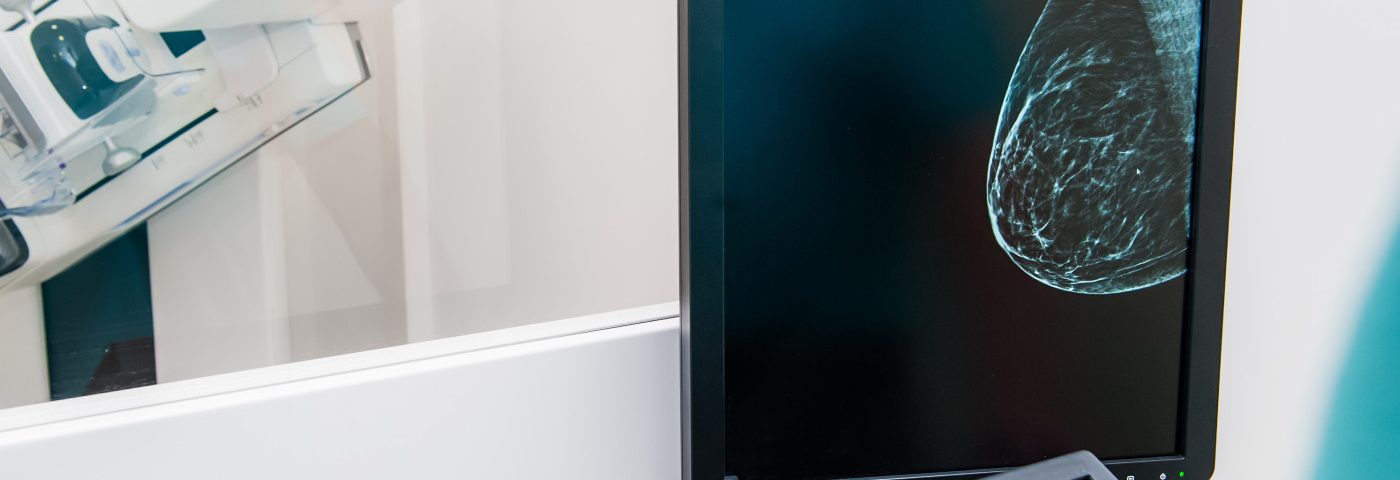The distinctive organization of enzymes in early breast ductal cancer can be used to correctly predict recurrences in 91% of cases, with 4% false negatives, a new study has found.
The diagnostic tool may assist with the early identification of patients at high risk of cancer recurrence while reducing overdiagnosis and treatment of low-risk patients.
The study, “Spatial locations of certain enzymes and transporters within preinvasive ductal epithelial cells predict human breast cancer recurrences,” was published in the American Journal of Physiology-Cell Physiology.
Ductal carcinoma in situ (DCIS) is an early-stage, non-metastatic form of breast cancer. While DCIS is noninvasive and highly treatable, it carries the risk of recurrence as metastatic (or invasive) breast cancer. Identification of DCIS patients who are at high risk for recurrence remains a challenge as available genomic tests that screen a patient’s complete genetic information have thus far failed to predict patient outcomes.
“Typically, patients with pre-invasive cancers, such as DCIS, are treated very aggressively,” Howard Petty, PhD, study co-author and professor at the University of Michigan, said in a university press release. “In the case of DCIS, this means partial or total mastectomies … but we know from other work that more than half of these patients will not experience invasive disease.”
Researchers at the university now hypothesized that the spatial organization of enzymes within breast cancer cells could be a better predictor for patient outcomes than genomics or the levels of certain enzymes. Several classes of enzymes were of interest, namely pentose phosphate pathway (PPP) enzymes, glutathione synthesis (GSH) enzymes, and RhoA enzymes, all of which are involved in cancer cell survival and growth.
The researchers tagged these enzymes and their modified forms in DCIS breast cancer tissue samples and assessed their location in the cells of patients who experienced recurrences compared to those who did not. They then used machine learning to develop computer models to predict patient outcomes from DCIS tissue.
DCIS tissue samples from mastectomies were collected from 70 patients (50 nonrecurrent and 20 recurrent), ages 37 to 80 years, who were followed for a minimum of 10 years.
RhoA and its modified form RhoA (GTP) were found at the periphery of ductal epithelial cells in patients who experienced a recurrence, but not in patients who did not. Similarly, in cells of patients who experienced a recurrence, GLUT1 and its modified form phospho-GLUT1, both GSH-related enzymes, were found near the cell membrane while non-recurrent patient cells lacked this distinct enzyme organization.
The PPP-associated enzyme G6PD was found at the cell periphery in both recurrent and non-recurrent patients. However, TKTLP1, a modified version of a PPP enzyme, clustered near the cell membrane in recurrent patients. These results indicate that the organization of specific enzymes in DCIS lesions can be observed as distinctive patterns that can predict recurrence.
An analysis of metastatic breast cancer tissue showed RhoA, phospho-GLUT1, and TKTLP1 clustered at the cell periphery, suggesting that the patterns observed in DCIS tissue from recurrent patients may be mirrored in invasive breast cancer.
The team used machine learning to screen DCIS samples and predict which patients would experience recurrent cancer.
“In machine learning, one typically teaches a computer to recognize an object such as a car or a cup,” the researchers wrote. “In the case of DCIS, the objective is to use machine learning to identify DCIS cases destined to become recurrent cancer.”
The computer was trained to classify tissue from recurrent and non-recurrent patients that was separately labeled for the enzymes of interest. The model that used the phospho-GLUT1 enzyme performed the best, correctly predicting outcomes for 81% of patients with 13% false positives, and 6% false negatives.
When testing the model’s ability to predict individual patient outcomes, the predictions were found to be 91% correct with 4% false positives, and 4% false negatives.
The results suggest that the diagnostic tool has the potential to predict breast cancer recurrence from noninvasive lesions, with a high degree of accuracy.
“This tool may also be useful in predicting the outcomes of other pre-invasive lesions and in predicting which patients will respond to specific therapeutic interventions,” Petty said.

